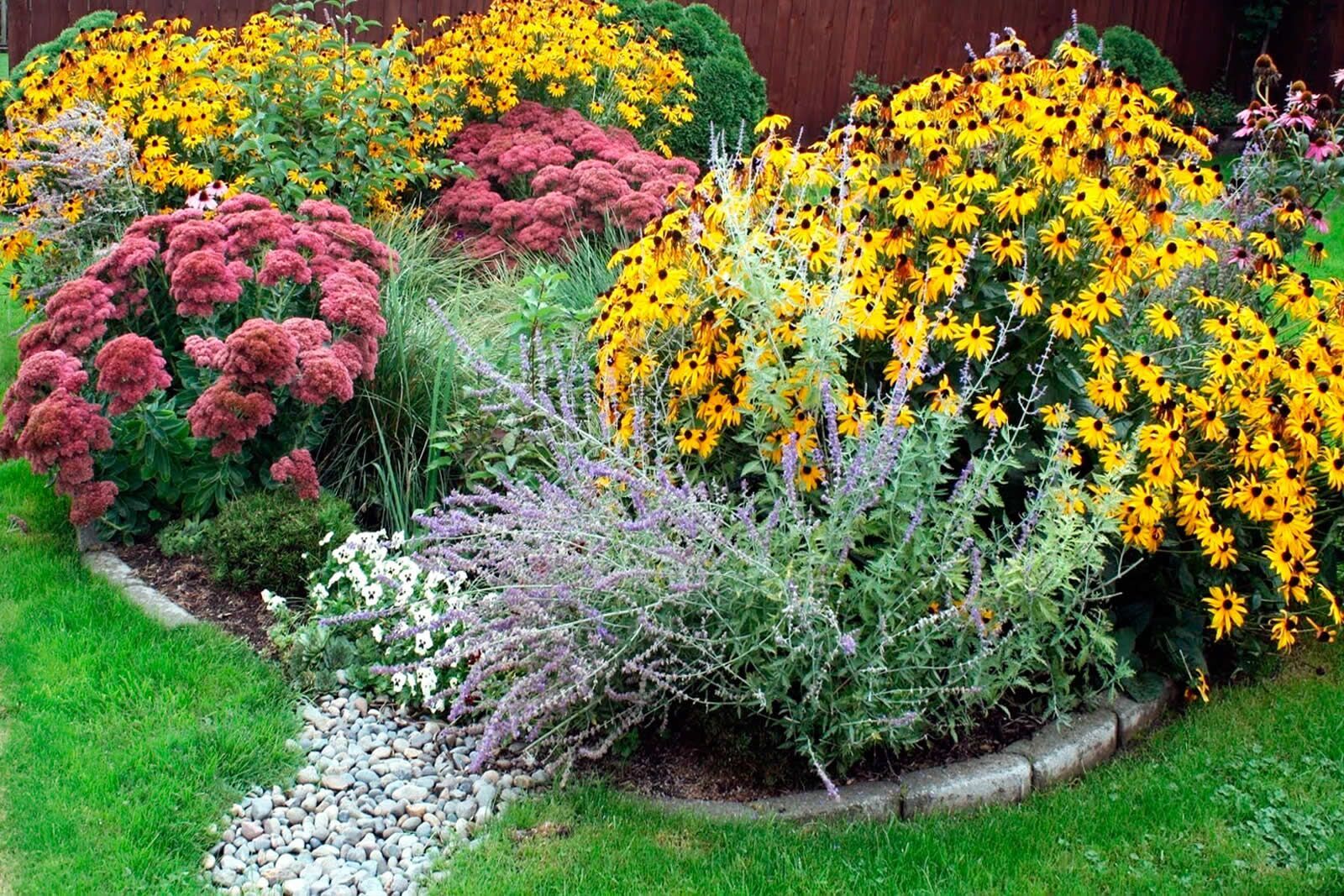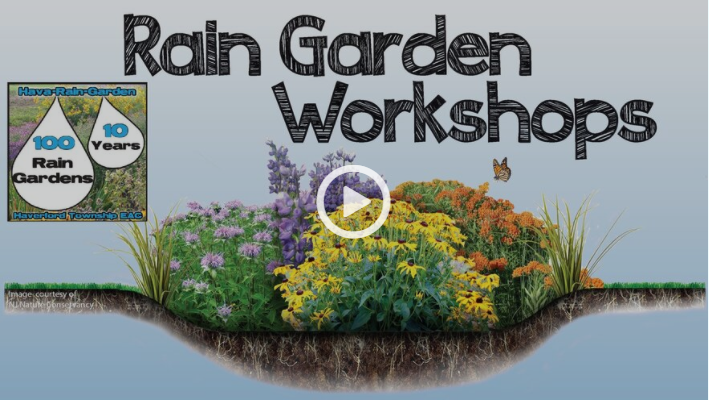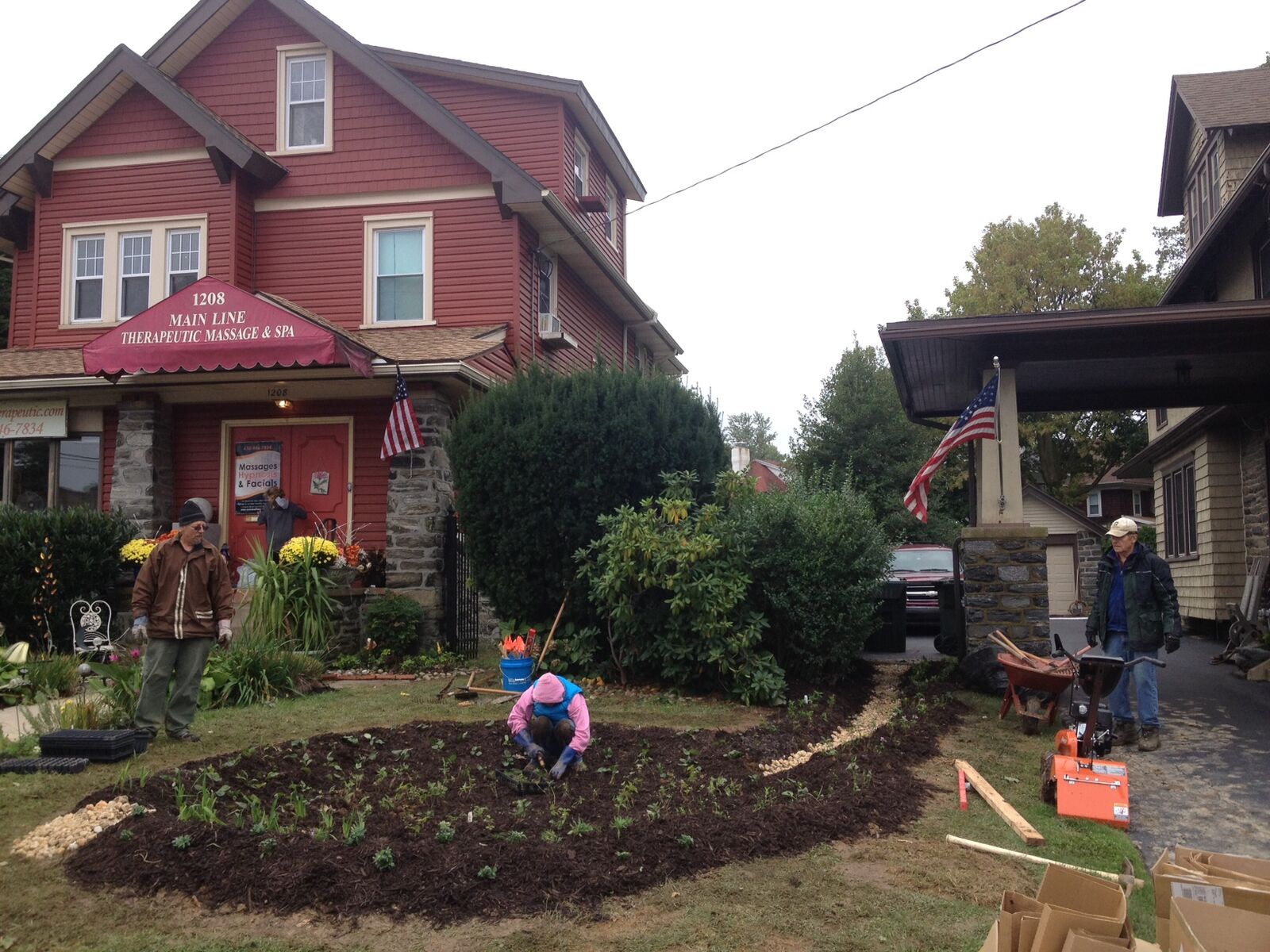%20orginal.jpg)
Rain Gardens |
Rain garden is a bowled garden that allows rainwater runoff from impervious urban areas like roofs, driveways, walkways, and compacted lawn areas the opportunity to be absorbed. This reduces rain runoff by allowing stormwater to soak into the ground (as opposed to flowing into storm drains and surface waters which causes erosion, water pollution, flooding, and diminished groundwater). Native plants are recommended for rain gardens because they generally don't require fertilizer and are more tolerant of one's local climate, soil, and water conditions.

What is a Rain Garden?
A rain garden is a slightly graded bowl that collects several
inches of water during a storm, providing time for it to infiltrate
into the ground and be used by the native plants - two natural
ways of filtering out pollutants!
Benefits:
The benefits of planting rain gardens are numerous. Rain garden
benefits include pollution control, flooding protection, habitat creation
and water conservation.
Pollution Control
Rain gardens filter out sediment and other pollutants (like animal waste, brake dust, oils and automotive chemicals) by capturing the first flush of rain (or first inch or so of rainwater runoff) which tends to contain the highest concentration of pollutants. When localized runoff flows into a rain garden the water slows down, because it is filtered by the soil and the plants. This allows the solids drop out over a wide area and eventually be absorbed by the soil and the plants through natural processes, including: filtering, absorption and naturally occurring microbes.
Flooding Protection
By positioning a rain garden, at least, 10 feet from your home or other structures and directing rain water runoff into the rain garden, it is possible to reduce the amount of rain that flows into your basement and toward the sewer. By holding this relatively clean water and allowing it to soak into the ground a rain garden can reduce localized flooding, replenish the local groundwater and improve water quality.
Habitat Creation
Rain gardens should always be planted with “deep-rooted native plants”. Deep-rooted plants are used to infiltrate rain water in wet times and sense and locate water in dry times. Native plants are required because the rain garden, primarily, because they are adapted to the climate, seasons and weather and will survive the best. These plants will also attract and provide shelter and food for wildlife and support pollinators. Native plants will support a variety of birds (local and migrating), butterflies (during the egg laying and migration seasons), beneficial insects and other wildlife by providing diverse habitats and food sources.
Water Conservation
Rain gardens capture and hold rain water and allows that water to soak slowing in to the ground. This reduces, actually eliminates, the need to ever water a rain garden once it is established and conserving municipal water use for the garden and surrounding landscape. This reduces the need and expense of watering your rain garden and allows other sources (rain barrel water) to be used on fruit and vegetable gardens.
More Benefits of rain gardens:
|
|
|
|
Click to view a recording of a March 2021 virtual Rain Garden Workshop: Supporting materials: 2023 Rain Garden Workshop SlidesLandscaping with Native Plants Brochure |


